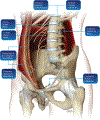A review of peripheral nerve blocks for cesarean delivery analgesia
- PMID: 31653797
- PMCID: PMC7182469
- DOI: 10.1136/rapm-2019-100752
A review of peripheral nerve blocks for cesarean delivery analgesia
Abstract
Peripheral nerve blocks have a unique role in postcesarean delivery multimodal analgesia regimens. In this review article, options for peripheral nerve blocks for cesarean delivery analgesia will be reviewed, specifically paravertebral, transversus abdominis plane, quadratus lumborum, iliohypogastric and ilioinguinal, erector spinae, and continuous wound infiltration blocks. Anatomy, existing literature evidence, and specific areas in need of future research will be assessed. Considerations for local anesthetic toxicity, and for informed consent for these modalities in the context of emergency cesarean deliveries, will be presented.
Keywords: QLB; anesthetics, local; cesarean section; ilioinguinal; nerve block; neuroaxial; postoperative analgesia; quadratus lumborum; regional block; trans abdominis plane; wound infiltration; wound infusion.
© American Society of Regional Anesthesia & Pain Medicine 2019. No commercial re-use. See rights and permissions. Published by BMJ.
Conflict of interest statement
Competing interests: None declared.
Figures



References
-
- Carvalho B, Butwick AJ. Postcesarean delivery analgesia. Best Pract Res Clin Anaesthesiol 2017;31:69–79. - PubMed
-
- Rodgers J, Cunningham K, Fitzgerald K, et al. Opioid consumption following outpatient upper extremity surgery. J Hand Surg Am 2012;37:645–50. - PubMed
-
- Williams BA, Kentor ML, Vogt MT, et al. Economics of nerve block pain management after anterior cruciate ligament reconstruction: potential hospital cost savings via associated postanesthesia care unit bypass and same-day discharge. Anesthesiology 2004;100:697–706. - PubMed
Publication types
Grants and funding
LinkOut - more resources
Full Text Sources
Medical
